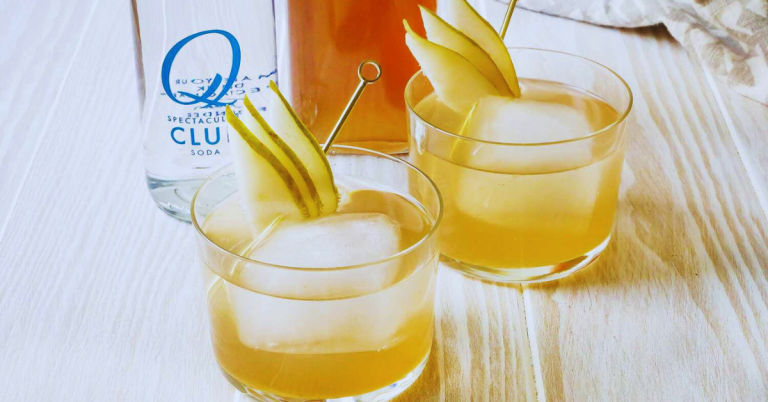Biltong Recipe For Dehydrator
Discover the perfect way to make delicious biltong at home using a dehydrator. Follow essential steps including selecting lean beef, marinating with vinegar and spices, and dehydrating at 155°F for 6-8 hours. This method ensures consistent and flavorful biltong every time. Ideal for busy experts seeking a quick, efficient, and professional approach to a traditional snack.
What if you could transform a piece of beef into a savory, protein-packed snack that dates back centuries? Biltong, with its roots in South Africa, is a prime example of how simple ingredients and time-tested methods can create extraordinary flavors. Using a dehydrator brings modern convenience to this traditional curing process.
Ingredients
Making biltong at home requires a few simple, yet essential ingredients. These items ensure the perfect balance between flavor and preservation. Let’s get started with the ingredients you’ll need.
- 2 pounds beef, cut into strips
- 1/2 cup apple cider vinegar
- 2 tablespoons coarse salt
- 2 tablespoons coriander seeds, toasted and crushed
- 2 teaspoons black pepper, freshly ground
- 1 teaspoon paprika
- 1 tablespoon brown sugar
General Information
Biltong is a traditional South African snack made from cured meat. Understanding its preparation can help you create the perfect biltong at home. Here are some key details to guide you.
| Category | Details |
|---|---|
| Making Difficulty | Easy to Moderate |
| Preparation Time | 30 minutes |
| Cooking Time | 6-8 hours |
| Serving Size | Depends on the amount of meat used |
| Meal Type | Snack |
Instructions
Making biltong with a dehydrator is a straightforward process. Follow these steps to ensure you get delicious, perfectly cured biltong every time. Pay attention to each step for the best results.
Step 1: Prepare the Meat
Start by selecting a good cut of beef, such as silverside or topside. Trim the meat to remove any excess fat, then cut it into strips about a quarter-inch thick. This ensures the meat dries evenly.
Once the meat is prepared, place the strips into a large bowl. Pour in the vinegar, making sure all the pieces are well coated. The vinegar helps tenderize the meat and gives it a tangy flavor.
Step 2: Season the Meat
Next, mix the coarse salt, coriander seeds, black pepper, paprika, and brown sugar in a bowl. Use your hands to rub the seasoning mixture all over the meat strips. Make sure each piece is well-coated for maximum flavor.
After seasoning, let the meat sit for about 30 minutes to an hour. This resting time allows the flavors to penetrate deeply into the meat. The marinating process is crucial for a delicious final product.
Step 3: Arrange in Dehydrator
Place the seasoned meat strips on the dehydrator trays. Ensure the pieces are not touching each other for proper air circulation. This prevents any uneven drying and ensures all strips are dried uniformly.
Set your dehydrator to a temperature of around 155°F (68°C). Dehydrate the meat for 6-8 hours. Check periodically to ensure the meat is drying correctly.
Step 4: Check and Store
After the drying period, check the biltong for doneness. The meat should be dry to the touch but still a bit flexible. If it breaks easily, it might be too dry.
Once done, remove the biltong from the dehydrator. Let it cool completely before storing in an airtight container. Proper storage ensures the biltong remains fresh and flavorful for longer periods.
Important Things to Keep in Mind
When making biltong, choose the right cut of meat. Cuts like silverside or topside work best because they are lean and dry well. Avoid using cuts with a lot of fat.
Marination is key to a flavorful biltong. Make sure to marinate the meat for at least an hour. This allows the spices to penetrate and infuse the meat with taste.
The temperature of your dehydrator is crucial. Too high, and the meat will cook rather than dry. Stick to around 155°F (68°C) for best results.
- Arrange meat strips with space in between for proper air circulation.
- Check the dehydrator periodically to prevent over-drying.
Proper storage is essential once the biltong is done. Use airtight containers to keep moisture out. This maintains the biltong’s texture and flavor longer.
Finally, always use fresh spices and high-quality vinegar. These small details can greatly impact the taste. Paying attention to these factors ensures you make top-notch biltong every time.
Health Benefits of Biltong
Biltong is not just a tasty snack; it also offers numerous health benefits. One of the most significant advantages is its high protein content. This makes it an excellent choice for those looking to build muscle or maintain a healthy diet.
Low in carbohydrates, biltong is a great option for people following low-carb or keto diets. Unlike many other snacks, it doesn’t contain added sugars. This makes it a healthier alternative to sugary treats.
Biltong is also rich in essential vitamins and minerals. These include iron, zinc, and vitamin B12. These nutrients are crucial for maintaining energy levels and overall well-being.
Improves Muscle Growth
The high protein content in biltong aids in muscle recovery and growth. This is particularly beneficial for athletes and fitness enthusiasts. Consuming protein-rich snacks like biltong can help repair muscle tissues after a workout.
Additionally, the amino acids found in biltong support muscle health. These amino acids are the building blocks of protein. They play a vital role in muscle development and repair.
Overall, incorporating biltong into your diet can enhance your fitness routine. It’s a convenient and nutritious way to get the protein your body needs.
Good Source of Iron
Iron is an essential mineral that helps transport oxygen in the blood. Biltong is a good source of iron, which can help prevent anemia. This makes it especially beneficial for people who are iron-deficient.
Consuming iron-rich foods like biltong can improve your energy levels. It can also enhance your cognitive function and overall health. Including biltong in your diet can help you meet your daily iron requirements.
Iron from animal sources is more easily absorbed by the body. This means that the iron in biltong is more effective than iron from plant sources. Eating biltong can help ensure you get enough of this vital nutrient.
Supports Weight Management
Biltong can be a valuable addition to a weight management plan. Its high protein content helps you feel full for longer. This can reduce the urge to snack on less healthy options.
Moreover, biltong is low in fat, making it a healthier snack option. Replacing high-calorie snacks with biltong can help you cut down on unnecessary calories. This can support your weight loss or maintenance goals.
Choosing nutritious snacks like biltong can make a big difference in your diet. It helps you stay on track with your health and fitness objectives. Biltong offers a satisfying and guilt-free way to enjoy a snack.
Frequently Asked Questions
Understanding the nuances of making biltong with a dehydrator will help you achieve the best results. These questions cover common concerns and tips that professionals often encounter. Get ready to dive into the details of perfecting your biltong recipe.
What type of beef is best for making biltong?
Choosing the right cut of beef is crucial for good biltong. Cuts like silverside or topside are ideal because they are lean and dry evenly in the dehydrator.
These cuts ensure a consistent texture and prevent excessive dryness. Avoid fatty cuts, as they can spoil and make the biltong greasy.
How long should the meat marinate?
Marination time is vital for soaking up flavors. Generally, marinating the meat for at least one hour is recommended to penetrate deeply with the spices.
Some experts prefer letting the meat sit up to 24 hours for a more intense flavor. Adjust the marination timing based on your taste preference and recipe specifics.
What is the best temperature setting for biltong in a dehydrator?
Maintaining the right temperature in the dehydrator is key. For biltong, a temperature of around 155°F (68°C) works best, ensuring the meat dries without cooking.
This temperature setting helps preserve the flavors while achieving the correct texture. Regularly check the meat to ensure it doesn’t over-dry or cook.
Can different types of vinegar be used for marination?
Absolutely, the type of vinegar can influence the final taste. Apple cider vinegar is commonly used and gives a slightly sweet flavor.
Other vinegar types like malt vinegar or red wine vinegar can impart different nuances. Experiment with various types to discover your preferred taste profile.
How do you store finished biltong to maintain its quality?
Proper storage is necessary to keep biltong fresh and flavorful. Once dried, store the biltong in airtight containers to prevent moisture from spoiling it.
You can also vacuum-seal the biltong for longer preservation. Proper storage techniques ensure the snack remains safe and enjoyable for extended periods.
How To Make The Best Biltong You Ever Tasted – Beginner Cured Meat Tutorial
Conclusion
Creating biltong using a dehydrator combines traditional methods with modern convenience. This process ensures that you can enjoy a flavorful, protein-packed snack any time. With the right meat cuts, marination, and dehydration techniques, top-quality biltong is within reach.
By following these guidelines, experts can perfect their biltong recipe. The end result is a delicious and nutritious snack that suits various dietary needs. Biltong-making becomes an enjoyable, rewarding culinary adventure.





